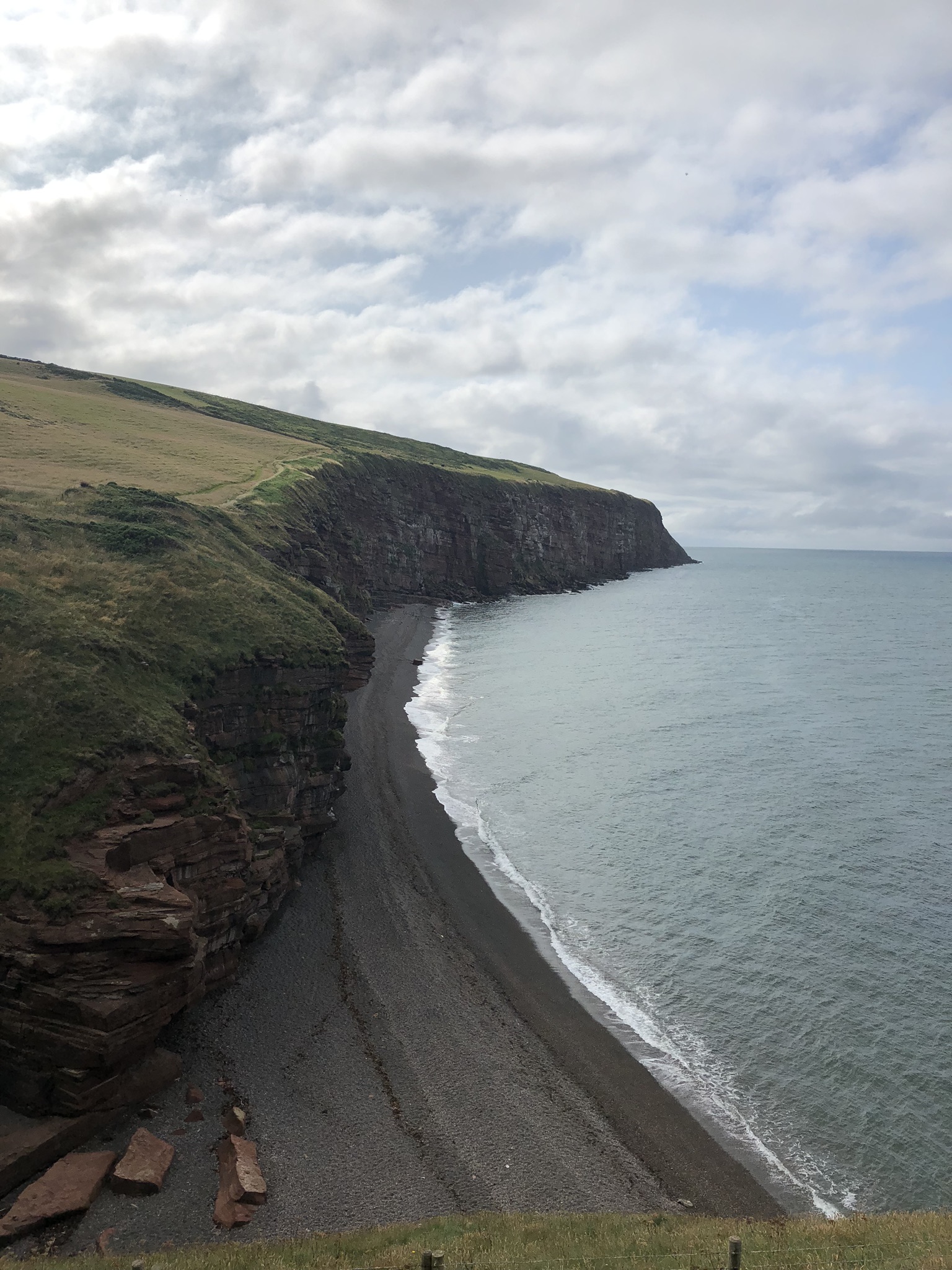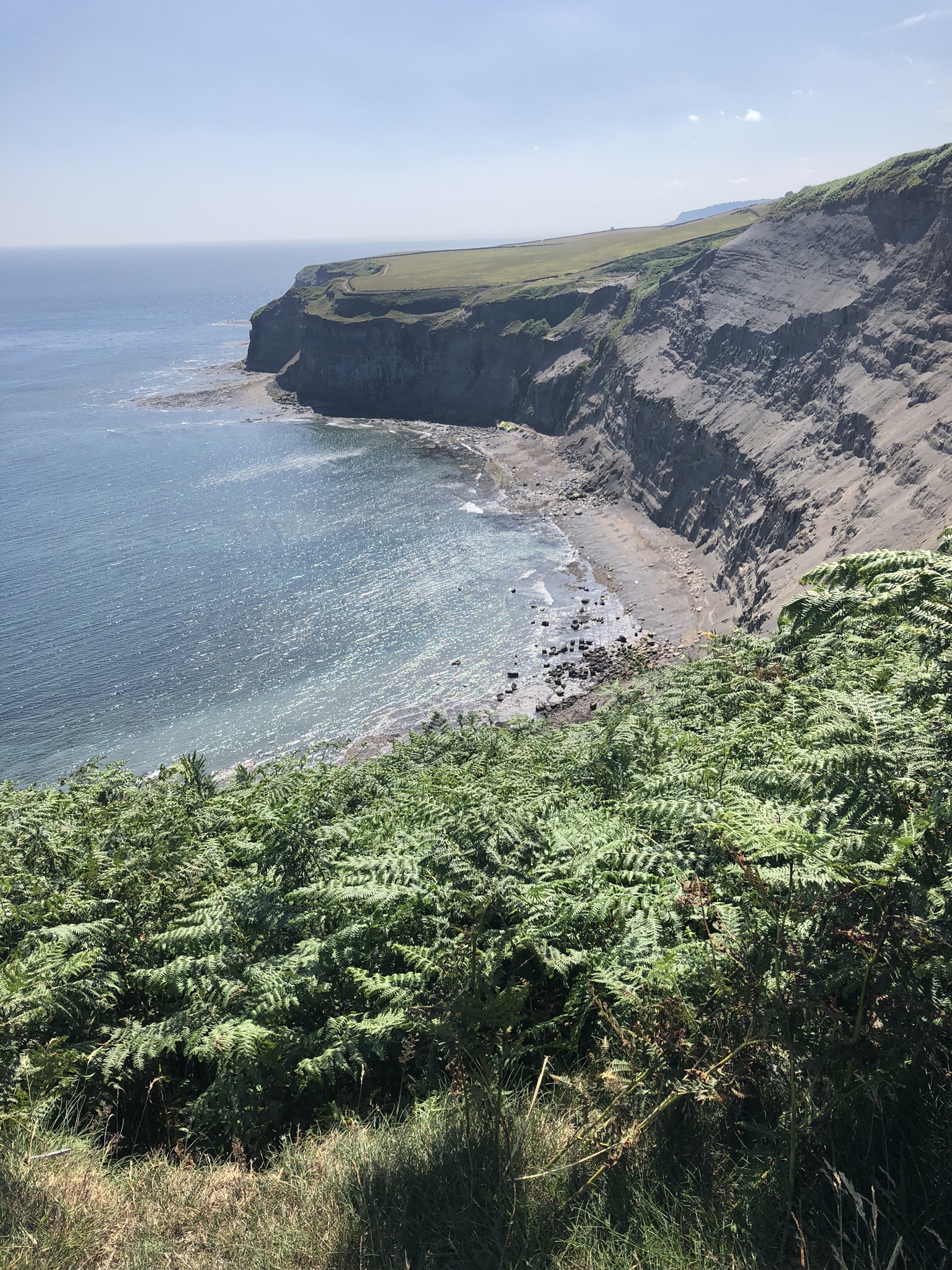Crossing England - One Step at a Time
It's called the Coast to Coast. To the English it's understood quite easily: it's the trek from one sea to the other. The trail was the brainchild of Alfred Wainwright, whose love for the mountains led him to discover a path in the 1930s. It would take thrill seekers through three National Parks (Lakes District, Yorkshire Dales and North York Moors) from one coast to the other, logging 192.2 miles. According to Smithsonian Magazine, "It's a walk through history and time, across an England that seems not to have changed in hundreds of years. But the trip is also a journey of companionship, and the most familiar friend is Wainwright himself, who walked alone."
The first ritual before starting out is to dip your foot in the sea and pick up a pebble to carry with you to the other coast.
I wanted the chance to walk the Coast to Coast myself and traverse forest and dale, moors and bogs and everything in between. I imagined strolling into quaint villages at days end, celebrating with a pint, devouring a hearty meal, getting to bed early and starting all over again the next day. I was lucky enough to convince three friends to join me in the adventure. The Coast to Coast walk was all I dreamed about and much more.
Sandstone cliffs along the Irish Sea guide you through the first leg of the walk before heading inland to the Lakes District National Park.
My senses went into overdrive as we set out across the west coast of England. Starting in St. Bees, the vistas were sheer sandstone cliffs, blue waters, wildflowers as tall as us and sheep pasture after sheep pasture. The air was cold, but with the rising elevation changes, we quickly peeled off our outer layers. We turned eastward into the Lakes District National Park, and soon the hills began. Up and down we climbed on paths sometimes as narrow as the width of our feet. Reaching the top was a moment of great accomplishment and an opportunity to take pictures that could never tell the whole story of the majestic beauty we were surrounded by.
It’s hard to imagine you climbed as high as you did. My strategy was to keep my head down until I got to the top and then turn around and see how far I climbed.
Another bonus along the trail is the opportunity to see and touch history. We visited a castle built in 1170, happened upon graveyards with headstones dating in the 1600s, and climbed to the top of Rigg to see the Nine Standards. There is quite a bit of myth and legend surrounding these nine stone cairns (pronounced “cans”). Some say they were constructed by the Roman army to appear as troops when seen at a distance to ward off the enemy. Others believe they are markers for burial plots. What is known is that they are ancient and appear on 18th-century maps. They and have stood on the windy summit above the town of Kirby Stephen for a very long time.
Stone cairns (cans) are carefully stacked stones, usually used to guide hikers along a path. Here, the ancient Nine Standards pack a lot of legend and myth.
Each evening we took lodging in small B&Bs booked for us through an outfitter. Mostly they were in villages, not towns as I mistakenly called them, and sometimes the only other establishment was a pub or two. The remoteness added to the charm of the English countryside. Everyone was warm and welcoming and happy to help disoriented Americans.
One night we stayed at the Frith Lodge in Keld. It was high atop a hill with sweeping views of the pastures below. Our hosts served a gourmet, three-course meal, which we ate at a long table with other hikers from around the world. Keld marked the halfway point of our journey, and all at the table that evening had reason to cheer.
The long and winding road to our lodging at the Frith Lodge.
Little surprises popped up here an there. One was the promise of cream tea at Ravenseat, an hidden gem situated on a sheep farm miles away from the nearest village, yet on the Coast to Coast trail. Our minds played games with us as we thought we were so close clogging through bogs that we sunk up to our knees into with each step, only to come around a corner and only see more marshes. Finally, we spotted the farm and hurried down to experience the delicacies of scones, tea, clotted cream, and jam in the middle of a national park.
Cream tea hits the spot
Ravenseat Farm serves up family life along with tea and scones.
Amanda Owen, her husband Clive and their nine, yes nine children live and work at Ravenseat. They are local celebrities of sorts and even have a TV show that chronicles the day to day comings and goings of a Yorkshire Shepherdess and her brood. The children mingle with the guests who sit at outdoor picnic tables. Tea is served by the eldest, Raven, who also directs the young ones in chores. It was amazing to see this extensive family work in unison with no squabbling. The film crew was there to watch one of the boys maneuver a tractor holding bales of hay. The rest of the farm and family buzzed on without interruption.
Young Clemy Owen shares a scone with guests as her dog happily picks up the scraps.
Our pace was aggressive with no rest days to tend to our tender toes, swollen with blisters. We brought medicated blister pads, bandages, and creams but time off from the trail would possibly be the best medicine. Rest days allow you to re-energize and heal.
We packed all the recommended gear on the outfitter’s list and only once had to put on rain gear. The downpour did not last long, and the sun came out a few minutes later. One time we were lucky enough to take shelter from a shower in Bilsdale in the North York Moors National Park, population 332. Here there was an oasis we were not expecting. A restaurant in the middle of the park serving the best meal I had on the trip. Lucky for me it was Sunday, and I was able to order a proper Sunday roast complete with tender beef cooked perfectly, gravy, roasted potatoes, creamed corn, and al dente organic vegetables.
The best meal was this epicurean “Sunday Roast”. I am searching for the creamed corn recipe - stand by.
The best was yet to come. Still, in the North York Moors, we got lost, and while wandering the roads of a small village, the voice of an angel called out. She said, “Are those Americans I hear?” “Yes!” we cried in unison and asked for help with directions. Penny went into action. She scuttled us into her home and straight to the kitchen where she put on a kettle for tea. She went about opening packages of biscuits and pouring tea, and just like that she embraced us along with her husband, Alan, the minister. We didn’t have time to notice there was a church next door and we were in the parsonage of this cute couple. As all five of us huddled in their cozy kitchen, we tried to figure out what went wrong.
They offered to drive us to the trail and along the way we received a history lesson of the ancient sites within a stone’s throw of where we were. The car ride was jovial, stopping a few times for Penny to pop out and pick wild blueberries along the road. We finally stopped, and before departing, Alan gave us his blessing in the middle of the North York Moors. That is an experience we will not soon forget. We were starting to rely on the kindness of strangers rather than our apps and maps.
Alan Coates and his lovely wife Penny served us tea and biscuits and helped three lost Americans get back on the path. You can’t plan days like this.
We greeted the last day of our journey with much anticipation and a little hesitation. We knew our goal was within reach; however, we would be saying goodbye to all we loved about the English countryside and its people. Overcome with the enormity of what we had accomplished; I reflected on the journey. It was harder than I expected. There were injuries and frustrations with being lost, but as the cliffs of Robin's Hood Bay appeared on the horizon, I only thought about the finish.
The path along the North Sea was breathtaking. Cliffs still courted the blue-green waters below. Even though we were approaching a real "town," the sheep pastures persisted, reminding us that we were still in the glorious English countryside. Day hikers passed us without backpacks and, we knew the end was near.
To see an ocean again was pure joy. This is the coastline of the North Sea approaching Robin’s Hood Bay.
The end was magical. We wound our way down off the path and into streets of a quaint town. Cliffside cottages gave way to winding cobblestone streets lined with shops selling trinkets and treasures to tourists who happened by.
We rehearsed the ending ritual of the Coast to Coast in our heads many times. We needed to toss the stone we took from St. Bees at the start of our journey on the Irish Sea and toss it in the waters of the North Sea. We did just that, and suddenly, it was over. Jubilation was the prevailing attitude. We made our way to a cliffside pub, ordered a celebratory drink, and toasted a job well done.
At journey’s end…
I tossed the same rock I picked up at St. Bees on the Irish Sea into the waters of the North Sea, some 200 miles later.











